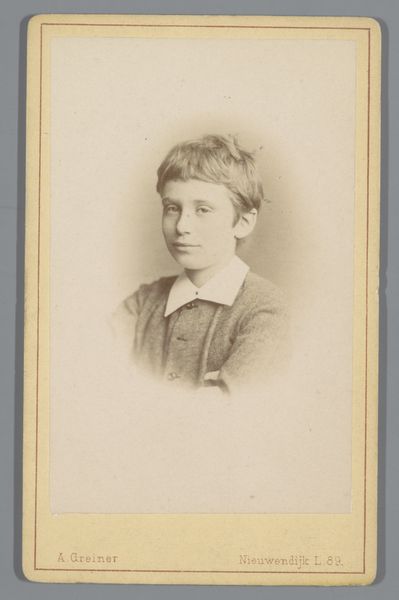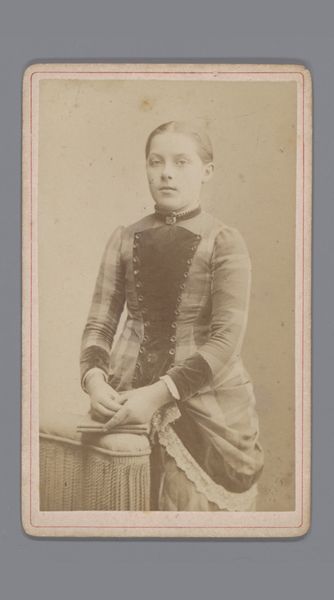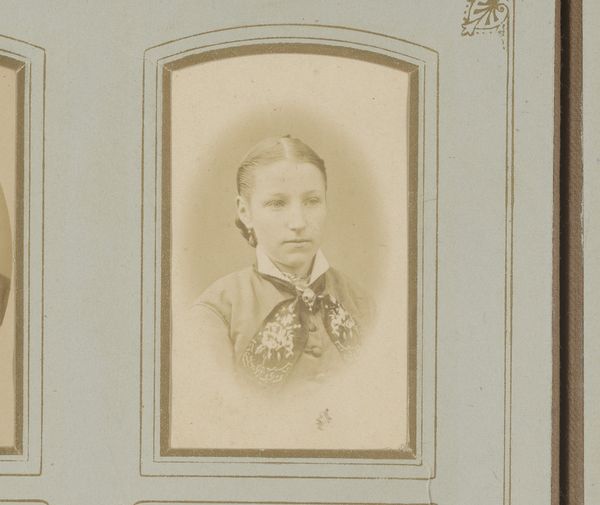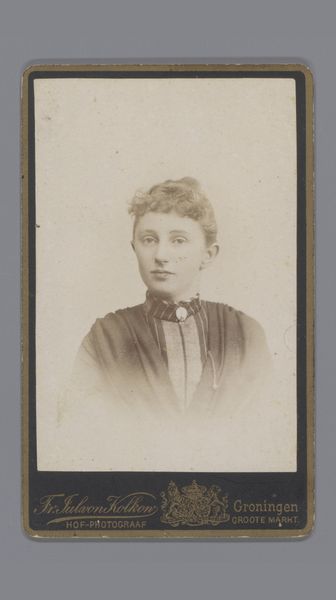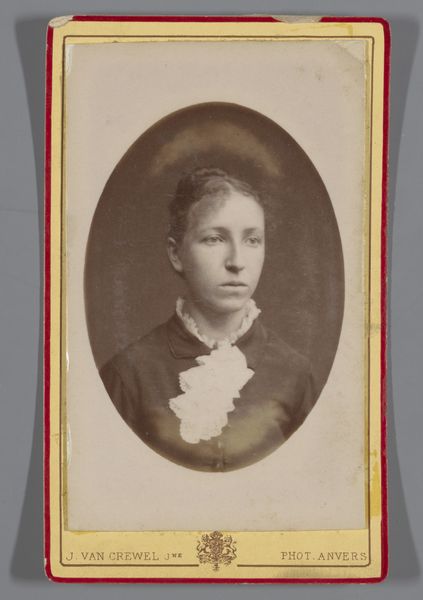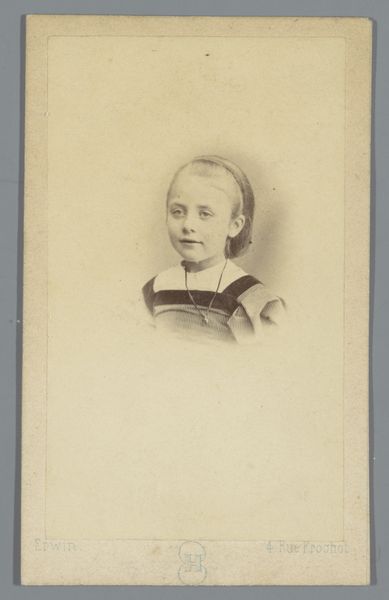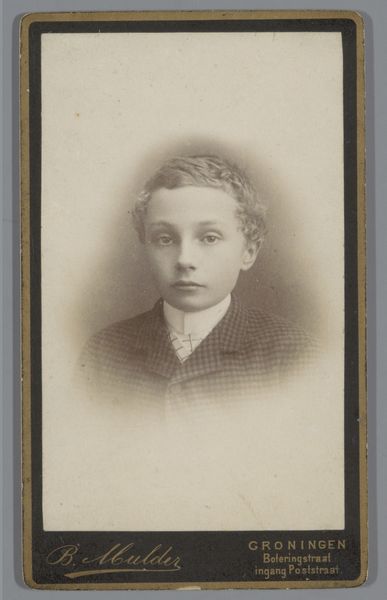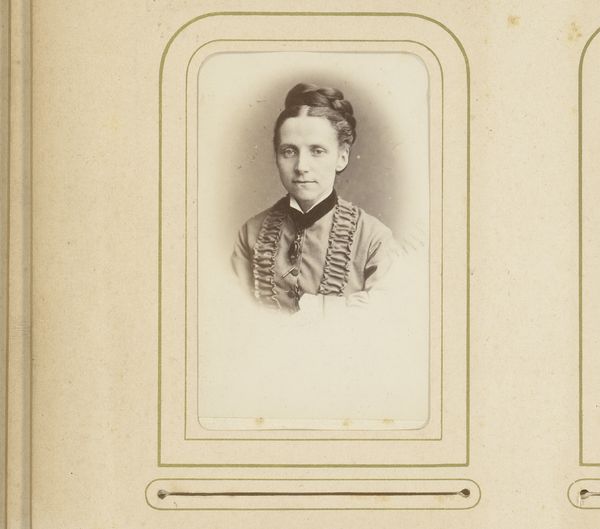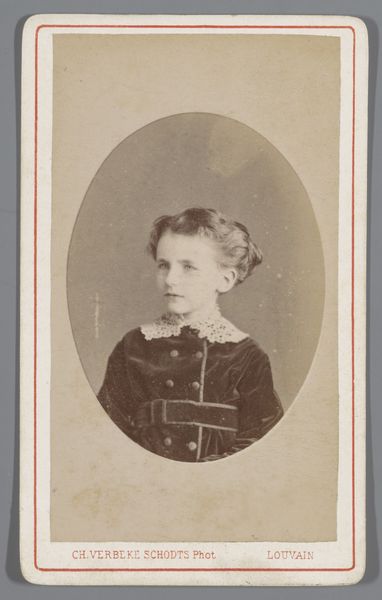
paper, photography, gelatin-silver-print
#
portrait
#
paper
#
photography
#
historical fashion
#
gelatin-silver-print
#
paper medium
Dimensions: height 105 mm, width 63 mm
Copyright: Rijks Museum: Open Domain
Curator: What strikes me immediately is the tonal range of this gelatin silver print—the way the subtle gradations create almost a porcelain-like texture on the boy's skin. Editor: That's an interesting observation. We're looking at "Portret van een onbekende jongen"—Portrait of an Unknown Boy—possibly created between 1873 and 1898 by Photographie Artistique of Antwerp. The piece is composed of paper employing photography, specifically using the gelatin silver print method. But beyond the materiality, the sitter is also framed within an historical lens of boyhood, class, and representation. Curator: Precisely! The use of gelatin silver processing would allow for much finer detail compared to earlier photographic methods, think about the increased output of printed media during the late 19th century... it meant a standardization and wider dissemination of these portraits. The commercial aspect becomes central; a photograph meant income for the photographer, status and commemoration for the family of the boy, isn’t it? Editor: It certainly prompts that conversation. It makes me question the role of portraiture in shaping identities, especially within a colonial context of late 19th century Belgium, given Antwerp’s history as a major port city and its links to resource extraction in the Congo Free State during that period. How might this boy's image serve as an unconscious emblem of that history? Who has the power to capture and circulate an image? How much of who the sitter actually was, can be caught on the paper? Curator: The photograph's status as a 'carte-de-visite' itself positions it within a framework of commodity exchange and social circulation. You were able to own an image of someone—be it royalty, celebrity or in this instance this seemingly upper-middle class young boy. Editor: I suppose when looking at it today we impose these social frameworks. It would be beneficial if the identity of the sitter would come to light, wouldn’t it? His fashion makes me curious of that time; from the high collar to his wool sweater vest ensemble and side part hair… Curator: It does offer a captivating glimpse into a very specific moment. It provokes an exploration of photographic techniques during a time of great social transformation and industrial growth. Editor: Exactly. While unraveling the past through art, let’s also address its resonance in today’s society, including questions of historical accountability, image ethics, and more. Curator: A fitting point to conclude; the work’s quietness prompts deep engagement.
Comments
No comments
Be the first to comment and join the conversation on the ultimate creative platform.
